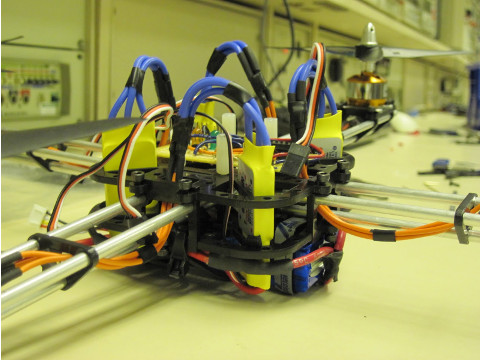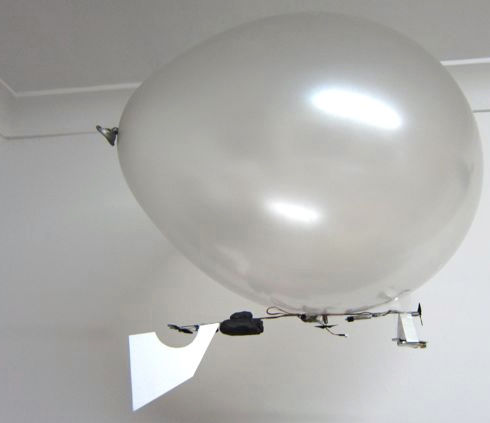| Index About Me |
Applications and Implications AssignmentThis assignment, though seeming straightforward, implies getting the
work (the real work, this is) on the final project into a certain stage
of advancement. In my case, this is not entirely true, However, I will
try to answer the questions in the most informed and honest way
possible This far into the course, I have not diverged from my original idea, making a multicopter in order to survey the surrounding areas from air, detecting certain signales, however, as the weeks passed, I came to realize that the idea might have gone a bit too far for my current skills and the Academy timeframe, so I've had to arrive to a certain compromise solution, this is: Making a Quadcopter for the project, and fabricating the control and sensor electronics in the lab, as well as the frame. But since there are critical pieces of the project that need to be sourced overseas and time is not strictly on my side as I am writing this, I have devised an alternate, fall-back project, this being a Helium Baloon (or array of Baloons) propelled by some small servos and that is to be controlled remotely.  So First, I will adress the questions requested for the "official" project and then, i'll go for the alternative one. Option 1: Quadcopter
The quadcopter I intend to build will fly in an outdoor environment, keep itself leveled and stable facing changing conditions such as wind direction and speed, surveying a small area from above with an approximately 1 kg payload in detection instruments (cameras, etc.) who's done what beforehand? Similar projects have already been attempted and achieved to various degrees, among the most interesting I could Find are: Jens Dyvik Hexacoper project, Flone and the Wyvern Quadcopter project, as well as the HTMAA alumni David Yamnitsky. what materials and components will be required? The essential components needed are:
where will they come from? Due to technical and time constraints, I intend to purchase the motors, propellers, ESCs, radiocontoller and battery from Hobbyking, and some additional electronics from sparkfun and Digikey, a few parts might be sourced locally. how much will it cost? Though I have not a final cost estimate, the project cost up to date is nearing $500, in part due to shipping and importing fees for some parts. what parts and systems will be made? In the lab I intend to make the IMU unit, the control unit and the frame. This includes programming the control system for the quadcopter. what processes will be used? For the present project the following processes will be executed:
what tasks need to be completed? To be completed:
what questions need to be answered? So far, there are several questions that need to be answered in order to succesfully complete this project:
what is the schedule? The schedule has certainly not been kept from the original sketch on the Final Project Idea Page and as I am writing this, serveral stages of work are being done concurrently:
how will it be evaluated? Though I am not completely sure about how to answer this question, I will say that the project evaluation should be done as a function of the completion in the various stages of the project, for instance:
these landmarks can be broken down into more punctual results that can be measured and verified by the local instructors. Option 2: Fab Blimp
what will it do? The Fab blimp will be an indoor blimp that will be able to make simple maneuvers via a remote control (RC or IR) This could be used for surveying certain environments (for instance, in a damaged building after an earthquake) or as an educational kit to introduce students to the basic concepts of flying machines who's done what beforehand? There are a number of projects involving small indoor Helium baloons and zeppelins, for instance the Hyperblimp Project as well as serveral Instructables Projects on the matter, like the Hummingblimp, and more particularly, the renowned Stingray Blimp by FESTO. what materials and components will be required? The essential components needed are:
where will they come from? Most of the parts on the project can be locally sourced might be sourced locally, though the radio controller and reciever might need to be imported. how much will it cost? Though I have not a final cost estimate, the project cost up to date is nearing $100, thought this might be an overshoot. what parts and systems will be made? In the lab I intend to assemble the engines array and the control unit what processes will be used? For the present project the following processes will be executed:
what tasks need to be completed? To be completed:
what questions need to be answered? So far, there are several questions that need to be answered in order to succesfully complete this project:
what is the schedule? This is esentially, a side project, related but completely different from the Final Project Idea Page and, making a very rough schedule, I would state the following:
how will it be evaluated? Though I am not completely sure about how to answer this question, I will say that the project evaluation should be done as a function of the completion in the various stages of the project, for instance:
these landmarks can be more broken into more punctual results that
can be measured and verified by the local instructors. |
 what will it do?
what will it do?